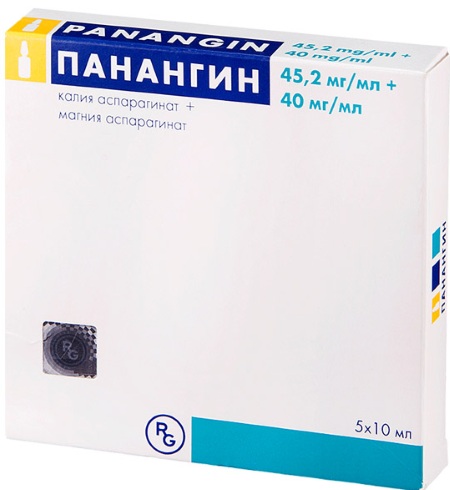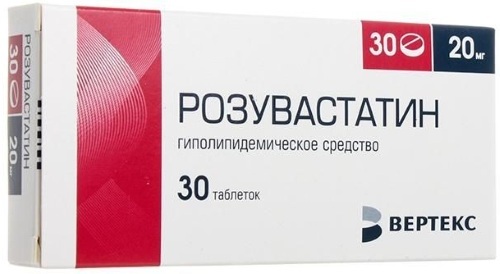Leg muscle spasm (cramp) - muscle contraction uncontrolled by a person, which is accompanied by pain that increases when trying to move a limb.
The reasons for this condition may be overstrain, chronic diseases, or a lack of certain trace elements in the body. Treatment of pathology depends on the frequency of occurrence of seizures, their severity and the general state of human health.
Record content:
-
1 Views
- 1.1 By the nature of origin
- 1.2 Depending on localization
- 1.3 Types of spasms
- 2 Symptoms and Signs
- 3 Causes
- 4 Diagnostics
- 5 Prophylaxis
-
6 Treatment methods
- 6.1 Drug treatment
- 6.2 Traditional medicine
- 7 Possible consequences and complications
- 8 Cramps Videos
Views
Spasm of the muscles of the legs, the causes and treatment of which must be determined exclusively by the doctor, is divided into several types in depending on the nature of muscle contractions, the presence of chronic pathologies in the patient, as well as physical impact on the human body.
By the nature of origin
Depending on the factor of origin, seizures are divided into 2 types:
- epileptic. Such spasms occur when a group of neurons in the brain are simultaneously excited, which leads to muscle stimulation. Epilepsy is a disease characterized by recurrence of seizures for no apparent reason. Convulsions can be general (a spasm manifests itself throughout the body and a person loses consciousness) or local (in this case, involuntary movements of the limbs appear). There is a separate type of seizure - Jacksonian epilepsy. In this case, the attack begins in one limb and spreads throughout the body;
- non-epileptic. This group includes many types of seizures that are not associated with epileptic seizures - due to trauma or otherwise effects on the body, the presence of chronic diseases, due to lack of nutrition or use medicines.
Seizures are rare. If spasms bother a person more often than once every 1-2 weeks, you need to consult a therapist, who will prescribe an examination and give recommendations for visiting a surgeon, vascular surgeon, endocrinologist or neurologist.
Depending on localization
Convulsions may not affect the entire limb, but its individual parts, depending on this, the pathology may have different localization:
-
spasms of the calf muscles, thighs. When a cramp occurs, the muscles feel like a stone to the touch - they are hard and tight. The attack lasts 1-15 minutes;
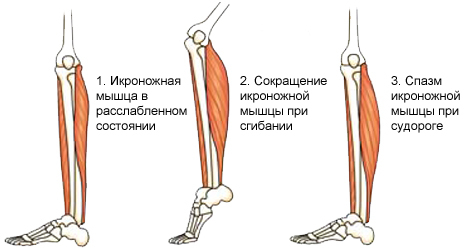
- spasms of toes. This is due to a violation of metabolic processes in the body, joint diseases or venous insufficiency. Often, seizures appear after wearing tight shoes, which leads to impaired blood flow;
- foot cramps. They appear due to flat feet or neurological pathologies and stop when the load on the limbs decreases.
Types of spasms
Depending on the pain syndrome and duration, muscle spasms are divided into several types, a description of which is presented in the table:
| Name | Description | Causes |
| Myoclonic | Spasms are characterized by involuntary contraction of a muscle group, which can be local, affecting half of the body or the entire body. They often appear after fright or before falling asleep and are considered a variant of the norm. Such spasms pass quickly and painlessly. Treatment is not required - it is enough for a healthy person to independently eliminate the cause of the seizures. In case of diseases and injuries of muscles, a consultation with a traumatologist is required. |
|
| Clonic | Spasms are characterized by irregularity and short duration, while the period of muscle contraction and relaxation is constantly changing. Such seizures require constant monitoring by a neurologist and examination (analyzes, DNA test, neuroimaging, EEG). For treatment, conservative or neurosurgical therapy is used. |
|
| Tonic | Convulsions are characterized by suddenness and duration. In this case, the limbs "freeze" in a certain position, and the person experiences pain. To diagnose spasms, a neurologist conducts an examination, prescribes tests. Treatment is carried out with the aim of stopping seizures and eliminating their cause. |
|
| Tonic-clonic | These seizures are a combination of 2 types of spasms. They are manifested by prolonged tonic spasms, which are replaced by rhythmic muscle contractions. Diagnostics requires extensive attention: tests, MRI, EEG are prescribed. Treatment can be medical or surgical. |
|
| Partial | Such seizures occur suddenly, they are uncontrollable and are accompanied by weakness in the limb. Spasms occur due to damage to a specific part of the medulla. For diagnostics, EEG, MRI and blood tests are used. |
|
As a rule, a spasm of the muscles of the legs lasts less than 5 minutes, is characterized by severe pain syndrome and a feeling of petrification of the limb.
Symptoms and Signs
Spasm of the muscles of the legs, the causes and treatment of the pathology should not be ignored in any case, it can manifest itself for various reasons, this condition can be diagnosed according to certain signs.
Symptoms of muscle cramps:
- sudden contraction of the muscles;
- sharp painful sensations;
- inability to move a limb, as the pain intensifies;
- involuntary leg movements or a sharp decrease in muscle tone.
A spasm in the leg muscles is a sign of a pathological condition of the body, which is characterized by the following signs:
- discomfort, accompanied by heaviness in the limbs, numbness and the presence of local pain;
- pain that may be burning or aching is a sign of the peak of the seizure;
- a slowdown in the pulse - usually a neurologist detects a symptom when examining a patient. This condition occurs due to a violation of normal blood circulation due to excessive compression of blood vessels during the period of convulsion;
- trophic disorders. This condition occurs with regular seizures, since constant disturbances in blood circulation provoke the appearance of other diseases, hair loss, increased fragility of nails and the formation of ulcers on the mucous membranes shells;
- change in body movement. After an attack, a person has an uneven gait, since pain does not allow him to fully rely on his leg.
Causes
A spasm of the muscles of the lower extremities can be caused by a number of reasons:
-
overvoltage. Spasm can occur due to prolonged training, uneven loading of the muscles, or lack of warm-up before doing the exercise. Overstrain is also observed in people whose work is associated with physical labor - a cramp occurs if the muscle does not rest for a sufficient amount of time;
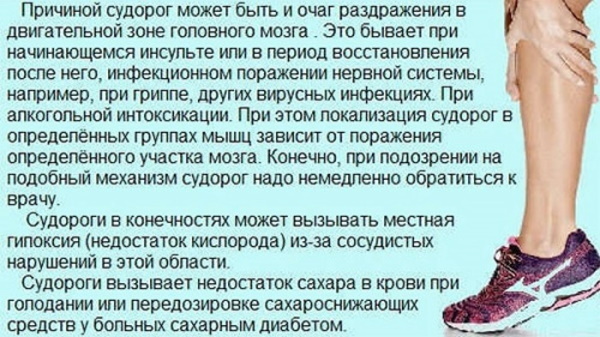
- pregnancy. Seizures can occur in any trimester. In the first 3 months, the cause of spasms is toxicosis, which leads to the leaching of trace elements, in 2-3 trimesters the cause of seizures is a lack of potassium, calcium and magnesium, as well as overexertion due to an increase in body weight women. At the end of pregnancy, the enlarged uterus can press on the inferior vena cava, which obstructs blood flow and leads to spasms;
- dehydration. With excessive sweating, trace elements are excreted from the body, which leads to a malfunction in the functioning of the muscular system;
- cold water. Bathing in cold water causes the muscles to contract, which very often leads to cramps;
- pathology of the vascular system - obliterating atherosclerosis, varicose veins, vascular injuries. Such conditions lead to circulatory disorders and leg cramps;
- taking medications of the diuretic group and hormonal contraceptives. Such drugs help to wash out sodium and potassium from the body;
- lack of vitamins and trace elements in the blood. With a deficiency of calcium, potassium, magnesium and vitamin D, the full functioning of the nervous system is impossible, which leads to a violation of the conduction of impulses to the muscles. An endocrinologist is involved in the diagnosis and correction of the diet, since a pathological condition can be caused by a malfunction of the thyroid gland;
- significant excess of magnesium in the blood. This factor causes the appearance of muscle weakness, an increase in body temperature, drying out of the skin and mucous membranes. Diarrhea can also occur, which can lead to dehydration, which causes muscle pain and cramps;
- neuronal excitability, which can occur in a stressful situation or with excessive emotional stress. Also, frequent excessive impulses are observed in epilepsy, brain trauma, hemorrhage and thromboembolism;
- violation of blood flow in the lower extremities - this can happen due to physical impact (compression by shoes, clothes) or in the presence of problems with blood vessels (varicose veins, atherosclerosis, thrombosis, blockage of veins);
- infectious diseasesthat affect the brain, which disrupts the conduction of neurons, and the liver (hepatitis). The inflammatory process in the liver leads to intoxication of the body and disturbances in the work of all systems;
- a decrease in the concentration of adenosine triphosphoric acid in the blood, which can be observed in heart failure, anemia, diabetes mellitus, hyperthyroidism, in the early postoperative period.
Diagnostics
Spasm of the muscles of the legs, the causes and treatment of this pathology require increased attention, since ignoring conditions and therapy can aggravate the emerging disturbances in the failure of the systems of the human organism.
In the event of a spasm in the legs, it is advisable to contact a therapist, who, based on a survey and diagnosis, will refer you to a narrow specialist.
To examine the patient and make the correct diagnosis, the following methods are used:
- taking anamnesis - the doctor finds out information about chronic diseases, the frequency of attacks, situations that precede them;
- palpation - the doctor feels the muscle, finding out the presence of tension and the localization of pain;
- analyzes - for the completeness of the diagnostic picture, a person needs to pass a clinical blood test to detect latent inflammation, infection, blood for sugar for exclusion of diabetes mellitus, biochemical blood test to determine the degree of liver and kidney function, general urinalysis to exclude diseases kidney;
- instrumental diagnostics - This is an examination using MRI, EEG, vascular ultrasound, X-ray, Doppler veins, electromyography.
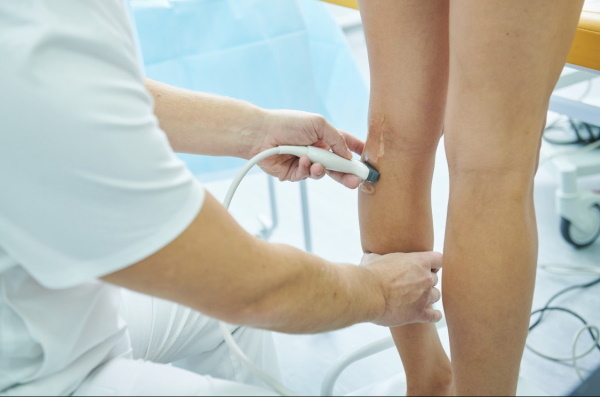 The greatest efficiency can be given only by a comprehensive diagnosis of the condition. A person is examined in a polyclinic at the place of residence. If seizures of the epileptic type are observed, then the neurologist may recommend observation and diagnosis in the hospital until the final diagnosis is revealed, seizure control and the appointment of a subsequent treatment.
The greatest efficiency can be given only by a comprehensive diagnosis of the condition. A person is examined in a polyclinic at the place of residence. If seizures of the epileptic type are observed, then the neurologist may recommend observation and diagnosis in the hospital until the final diagnosis is revealed, seizure control and the appointment of a subsequent treatment.
The price of the procedures varies depending on the location of the examination. In the city clinic, prices are usually lower.
The average cost of a survey is within the following limits:
- clinical blood test - 300-700 rubles;
- biochemical blood test - 800-1,500 rubles;
- consultation of a narrow specialist - from 1,000 rubles;
- blood sugar - 300 rubles;
- general urine analysis - 300-400 rubles;
- MRI - from 3,000 rubles;
- EEG - from 1,500 rubles;
- Vascular ultrasound - from 2,000 rubles;
- EMG - from 1,300 rubles.
Prophylaxis
A spasm of the muscles of the legs can occur in a person at any time of the day and anywhere. In order not to panic, you need to know the algorithm of actions when a pathological condition occurs.
Help with the appearance of muscle spasm in the legs consists in the sequence of the following steps:
- First, you need to understand the possible causes of the seizure, determine if it is caused epileptic seizure, in this case, self-medication or any actions of an outsider can harm. A feature of epileptic spasm is rhythmic muscle contractions that last 20-30 seconds. Helping the person should be to sit him on a bench to avoid falling or lay him on a horizontal surface, turning the head to one side so as not to cause the tongue to sink, and wait until the end attack.
- If the spasm is not related to the disease, it is necessary to lie on your back and raise the limb, placing a pillow under the heel. If the spasm occurs on the street, then you should sit on a bench and put your foot on it. This position of the limb stimulates the outflow of blood and prevents the formation of stagnation.
- Next, you need to take your toes with your hand and bend the foot towards the knee in 2 stages: first on half and release, then slowly pull the foot as much as possible and hold it in this position until the spasm will pass. Such actions forcefully stretch the muscles and force them to absorb oxygen-rich blood - this leads to muscle relaxation.
- Then you need to do a light massage of the muscle to improve blood microcirculation. If pain persists, you should pinch or slightly poke the area of spasm until the discomfort disappears.
 Preventive measures include the following:
Preventive measures include the following:
- adherence to sleep and wakefulness, work and rest, nutrition;
- inclusion in the diet of foods rich in potassium, magnesium, calcium and vitamin D;
- to exclude sharp muscle tension and their prolonged load without preliminary warming up.
Diet recommendations are as follows:
- adhere to the daily calorie intake;
- a third of the diet should contain plant foods;
- you need to eat 5-6 times a day, while each serving should contain fiber;
- dinner should be 2 hours before bedtime.
Treatment methods
Spasm of the muscles of the legs, the causes and treatment of the pathology require a diagnostic examination, it is effectively amenable to therapy. For this, medicines or traditional medicine techniques are used. The use of the latter option requires mandatory consultation with a specialist.
Drug treatment
Medication therapy is recognized as the most effective, it is the basis for the treatment of lower limb cramps with confirmed epileptic seizures, neurological problems, varicose veins, vitamin deficiency and internal diseases organs.
Self-treatment of leg cramps is unacceptable. Before taking medications, it is necessary to consult a therapist or more narrow specialists - a rheumatologist, neurologist, vascular surgeon, endocrinologist.
There are several pathological conditions of the body in which seizures may occur, they are reflected in the table:
| Cause of seizures | Treatment methods |
| Avitaminosis | With vitamin deficiency, the following drugs help to effectively compensate for the lack of trace elements:
|
| Dehydration | The situation can be corrected by drinking up to 8 glasses of water a day, the total volume should not be less than 1.6 liters. |
| Violation of blood circulation in the lower extremities |
|
| Anemia | In mild cases, a diet is prescribed, in severe cases - iron-containing drugs:
|
| Varicose veins |
|
| Hepatitis |
|
| Obliterating atherosclerosis |
|
Traditional medicine
Traditional medicine is an aid to traditional treatment, not a replacement.
Among the remedies for cramps in the legs, the following are effective:
- massage, which helps prevent congestion and improve blood circulation. It relieves tension regardless of the cause of the seizures. It is better to perform massage after exercise with the use of warming components (ointments, apple cider vinegar, alcohol);
- physical exercise help to increase blood circulation and keep muscles in good shape. For prevention, they can be given a simple load: sit on the floor, stretch your legs in front of you and reach with your hands to the fingers of the lower extremities;
- bay leaf oil. For grinding, you need to prepare the following composition: grind 100 g of bay leaves by hand and pour 500 ml of olive or sunflower oil. Then you need to leave the product to infuse in a dark place for at least 2 weeks, then strain. The resulting mixture should be smeared with problem areas daily;
- lemon juice. Fresh juice should be lubricated on the legs or feet before going to bed and let it dry. The procedure should be performed within 2 weeks;
- magnet, which must be applied to the problem area for 1 minute;
-
alcohol tincture of lilac. For its preparation, it is necessary to put lilac flowers (1-3 branches) on the bottom of a jar with a capacity of 0.5 liters and fill them with alcohol. The infusion should be left to infuse for 2 weeks in a dark place. You need to use the product 2 times a day - in the morning and in the evening.

Decoctions of herbs should be taken orally, after filling the plant with boiling water and insisting until it cools.
For the manufacture of funds, you can use the following herbs:
- Adonis. Take for adults 1 tbsp. l. 2 times a day;
- Birch buds. 1 glass of the product must be drunk in 2 days;
- broad-leaved groundwort. An adult should consume 40 drops of the drug every day, 1-3 times a day, depending on the frequency of spasms;
- Linden. The broth should be taken in 2 tbsp. l. 2 times a day;
- thyme - This herb has a relaxing and calming effect. Should be taken in 1 tbsp. l. 3 times a day.
Possible consequences and complications
Spasm negatively affects the work of blood vessels.
If the attacks are repeated regularly, and treatment is not carried out, then this can lead to the following consequences:
- blood vessels are squeezed, because of this, the outflow of blood is disturbed, which leads to congestion. Stagnation of blood is accompanied by a sharp increase in the concentration of lactic acid and potassium in it, which negatively affects the work of the heart (arrhythmia develops, heart failure increases);
- due to excessive tension during a spasm, the work of nerve endings is disrupted, due to which the human nervous system experiences shock;
- Frequent excessive muscle contraction damages their fibers, which is fraught with loss of sensitivity, weakness in the limbs and a decrease in strength.
A spasm of the muscles of the legs is a disruption in the functioning of the human body; it may indicate the presence of serious diseases of various organs.
It is necessary to timely identify the causes and prescribe treatment, this can only be done by a specialist based on the results of the examination. With the systematic occurrence of seizures, it is necessary to undergo a mandatory consultation with a doctor in order to prevent the occurrence of irreversible consequences.
Cramps Videos
Malysheva on what to do with a seizure:

